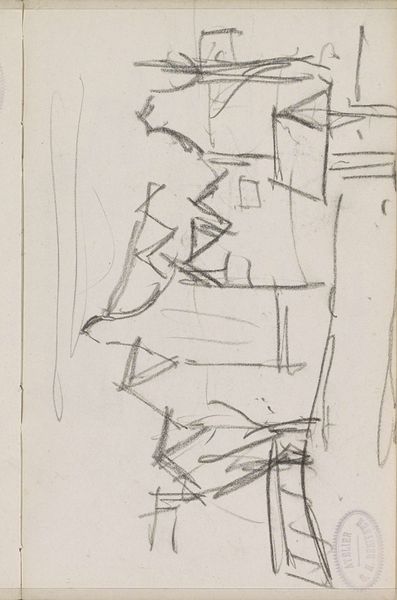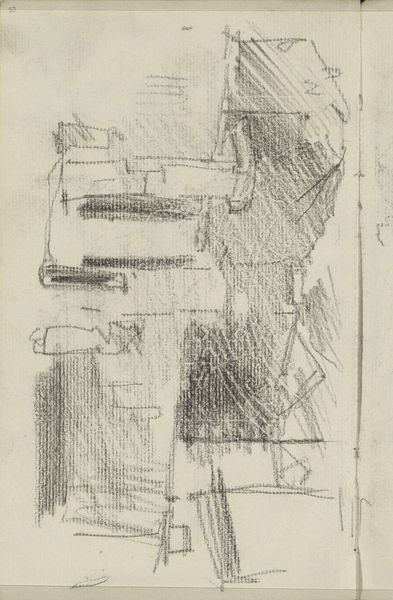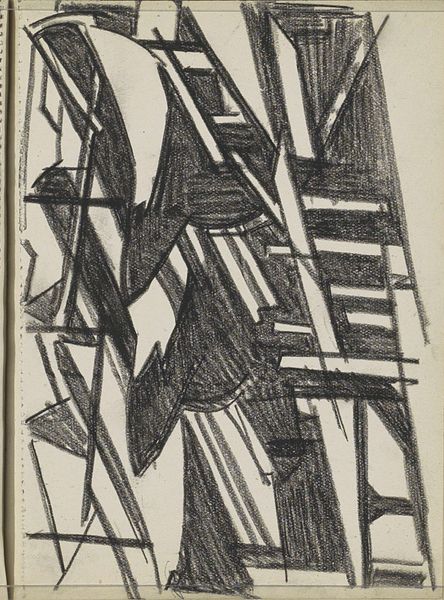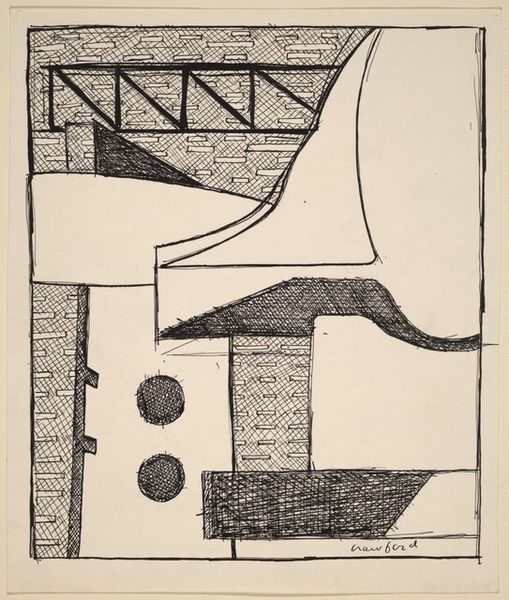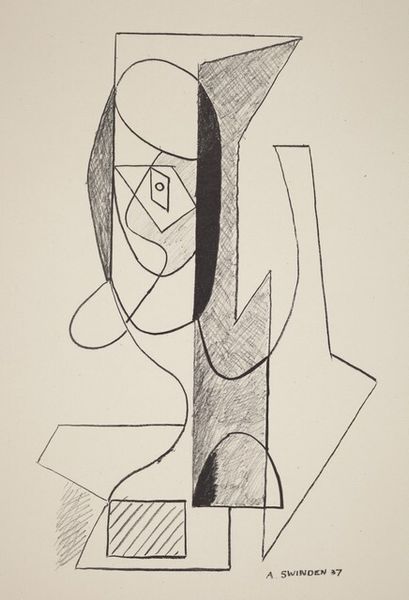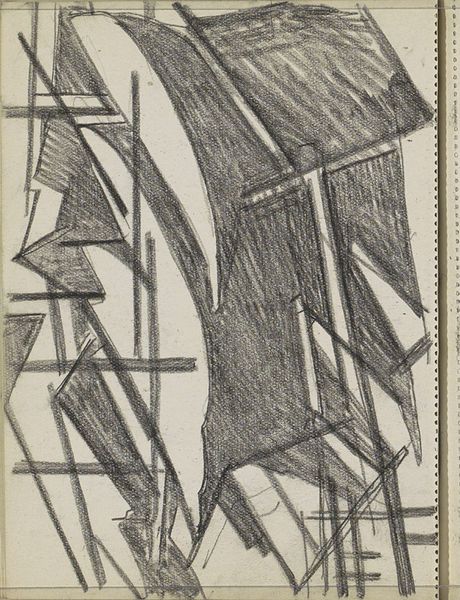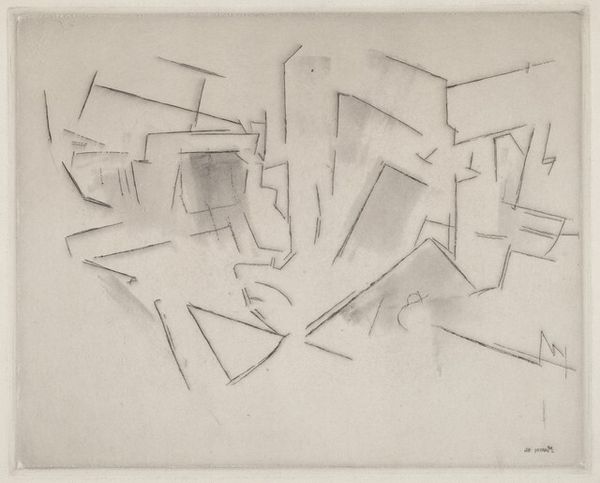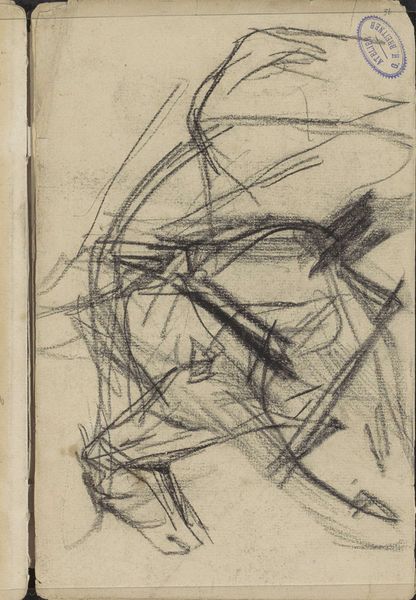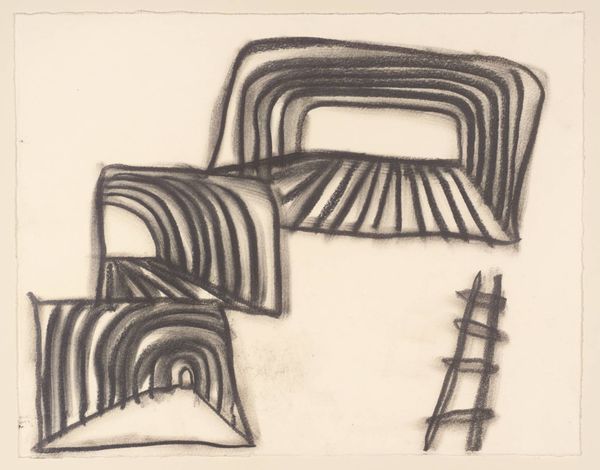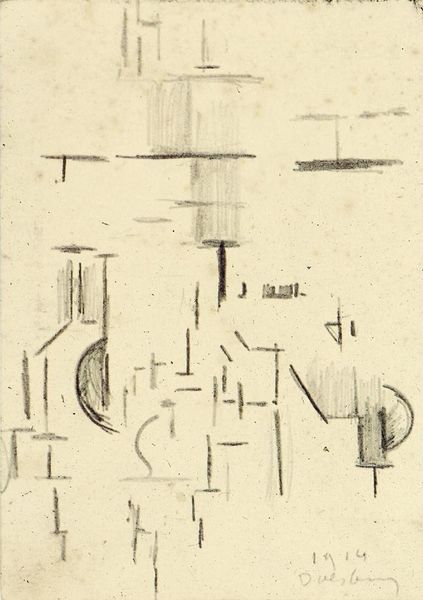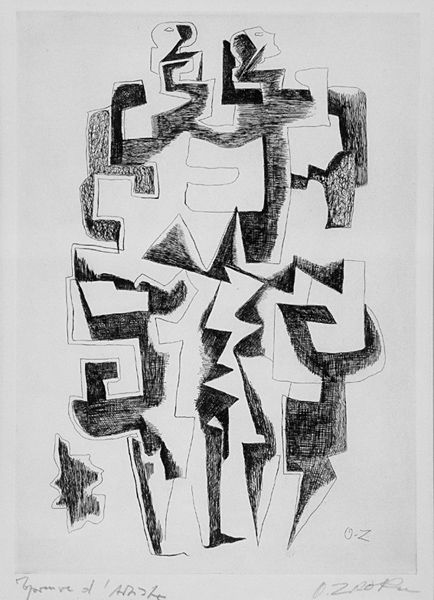
Dimensions: support: 298 x 229 mm
Copyright: © The estate of William Roberts | CC-BY-NC-ND 4.0 DEED, Photo: Tate
Curator: This is William Roberts' Study for ‘Two Step,’ a graphite drawing held at the Tate. The drawing's dimensions are modest, roughly 30 by 23 centimeters. Editor: It looks like a deconstruction of figures—dynamic, almost as if a dance is being broken down into geometric components. Curator: Roberts was deeply influenced by Vorticism, reflecting its machine-age aesthetic and interest in fragmentation, though he later tempered it with a more figurative approach. Here, we see movement abstracted into angular forms. Editor: The grid underneath suggests the artist’s process—careful calculation, a structure underlying the apparent chaos. It reminds me of early choreographic notation systems. Curator: Interesting observation. Perhaps the angular motifs serve as symbols of movement and rhythm, capturing the essence of the "Two Step". Editor: Ultimately, the drawing creates a sense of contained energy, ready to burst out of its geometric confines. Curator: Indeed, it offers a glimpse into the artist's exploration of form and movement.
Comments
No comments
Be the first to comment and join the conversation on the ultimate creative platform.
